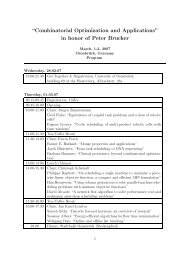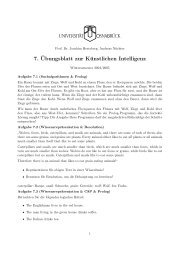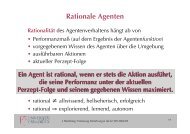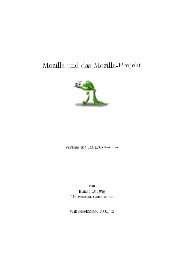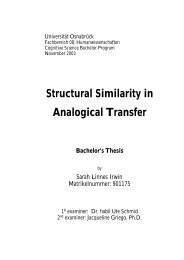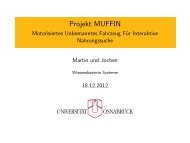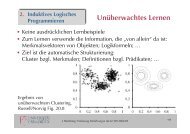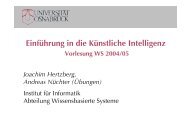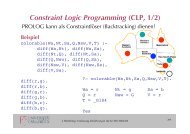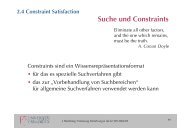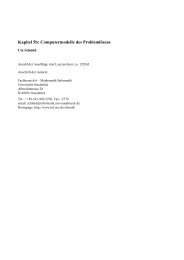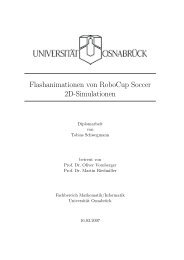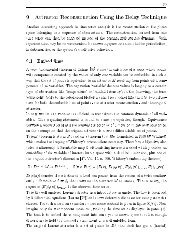Unsupervised Recursive Sequence Processing - Institute of ...
Unsupervised Recursive Sequence Processing - Institute of ...
Unsupervised Recursive Sequence Processing - Institute of ...
You also want an ePaper? Increase the reach of your titles
YUMPU automatically turns print PDFs into web optimized ePapers that Google loves.
and<br />
△c j = ɛ ′ · h σ (nhd(n j0 , n j )) · (C SOMSD (s i+1 , . . . , s t ) − c j )<br />
with learning rates ɛ, ɛ ′ ∈ (0, 1). n j0 denotes the winner for sequence entry i.<br />
As demonstrated in [11], a generalization <strong>of</strong> this approach to tree structures can<br />
reliably model structured objects and their respective topological ordering.<br />
We would like to point out that, although these approaches seem different, they<br />
constitute instances <strong>of</strong> the same recursive computation scheme. As proved in [14],<br />
the underlying recursive update dynamics comply with<br />
d((s 1 , . . . , s t ), n j ) = η 1 ‖s 1 − w j ‖ 2 + η 2 ‖C(s 2 , . . . , s n ) − c j ‖ 2<br />
in all the cases. Their specific similarity measures for weights and contexts are denoted<br />
by the generic ‖ · ‖ expression. The approaches differ with respect to the<br />
concrete choice <strong>of</strong> the context C: TKM and RSOM refer to only the neuron itself<br />
and are therefore restricted to local fractal codes within the weight space; RecSOM<br />
uses the whole map activation, which is powerful but also expensive and subject<br />
to random neuron activations; SOMSD relies on compressed information, the location<br />
<strong>of</strong> the winner. Note that also standard supervised recurrent networks can be<br />
put into the generic dynamic framework by choosing the context as the output <strong>of</strong><br />
the sigmoidal transfer function [14]. In addition, alternative compression schemes,<br />
such as a representation <strong>of</strong> the context by the winner content, are possible [37].<br />
To summarize this section, essentially four different models have been proposed<br />
for processing temporal information. The models are characterized by the way in<br />
which context is taken into account within the map. The models are:<br />
Standard SOM: no context representation; standard distance computation; standard<br />
competitive learning.<br />
TKM and RSOM: no explicit context representation; the distance computation<br />
recursively refers to the distance <strong>of</strong> the previous time step; competitive learning<br />
for the weight whereby (for RSOM) the averaged signal is used.<br />
RecSOM: explicit context representation as N-dimensional activity pr<strong>of</strong>ile <strong>of</strong> the<br />
previous time step; the distance computation is given as mixture <strong>of</strong> the current<br />
match and the match <strong>of</strong> the context stored at the neuron and the (recursively computed)<br />
current context given by the processed time series; competitive learning<br />
adapts the weight and context vectors.<br />
SOMSD: explicit context representation as low-dimensional vector, the location<br />
<strong>of</strong> the previously winning neuron in the map; the distance is computed recursively<br />
the same way as for RecSOM, whereby a distance measure for locations<br />
in the map has to be provided; so far, the model is only available for standard<br />
rectangular Euclidean lattices; competitive learning adapts the weight and context<br />
vectors, whereby the context vectors are embedded in the Euclidean space.<br />
10





